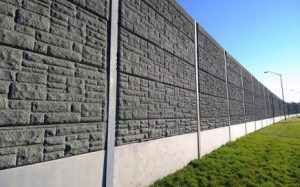Placebo architecture and other whimsical objects

Placebo architecture and other whimsical objects is a proposal to the Canadian Centre for Architecture (CCA) for a call for participation in a collection that examines urban anomalies and aberrations that have little or no practical purpose but, unlike public art or monuments, are intended to serve a particular civic function such as the sound barriers around main traffic arteries. We call these examples of placebo architecture, structures that proudly stand for decades, bearing testament to the social engineering strategies of complacent – or incapable – gouvernmentality.
At Urban Sounds: Acoustic Transformations in the 21st Century City, a roundtable featured a presentation from two Montreal urban planners who gave a bubbly positivist account of their valiant efforts to improve the aural health and happiness of urbanites. Though the examples given certainly meet the formal criteria of “something getting done,” it was nevertheless not clear whether it was in fact effective. Sound barrier walls, according to presenter Marthe Boucher, improved the life of citizens living near loud areas with constant traffic, but was fuzzy on practical details such as noise measurements, possibly the most important metric, dismissed as mere trivial details. There seemed to be no understanding that wide-band noise of the kind produced by a highway, for example, is not effectively screened by a wall. Boucher’s celebrated that the vines growing on an acoustic barrier wall would make it blend in with the environment visually and sonically, as if the wind rustling through the leaves could mask the sounds of traffic on the other side. The totality of the experience, she asserted, would be more “ecological.” This detachment from reality is a frustrating reminder of the kind of civil servants and middle managers that make critical and consequential decisions while operating behind the occlusion of faceless institutions that are difficult to hold to account.
An article exploring the issue in more depth finds that there is minimal benefit to placebo architecture and managerial fantasies do not translate into scientific measurements:
The use of a single vertical screen to obstruct the propagation of noise from source to receiver over hard and soft flat ground is well known. However, in addition to considerations of acoustical efficiency, the design of road traffic noise barriers depends on many other factors. Site conditions, planning restraints and visual considerations will affect the final selected design, as will engineering considerations related to the construction materials, the weather loading due to wind and precipitation. The aim of this article is to show both the acoustical benefits and drawbacks of using a screen adjacent to a highway located in a cutting dip in otherwise flat ground topography.
Peplow, Andrew T. “Traffic noise sources in cutting dips adjacent to screens” in Noise & Vibration Worldwide. Sep 2007, Vol. 38 Issue 8

